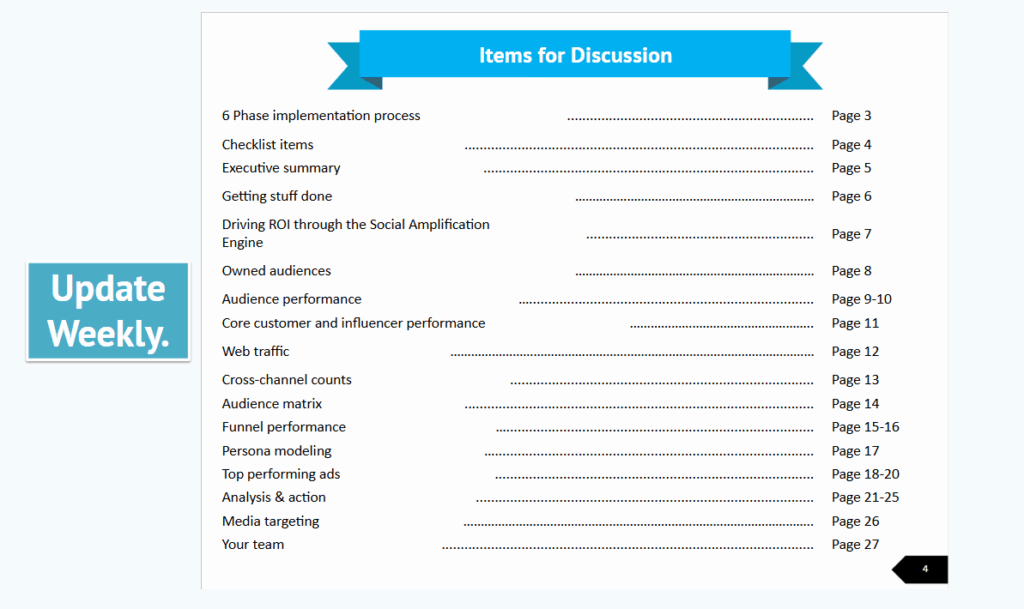How the TEAM System (Success Tracker) Works
Do you have a client or project where you want to get serious results, beyond what you can handle alone? Then you need a system, not just motivation.
Most coaches, authors, and entrepreneurs think success comes from believing in yourself, buying another course, or praying harder. But belief without structure is like trying to fly without an airplane. Boeing doesn’t flap its wings, it assembles a 747. You need a team, a process, and a repeatable system that scales.
That’s what the TEAM System (also known as the Success Tracker) is for.

What the TEAM System Is
The TEAM System is our framework for running client campaigns using the Social Amplification Engine (SAE) and the 9 Triangles principles.

It’s a six-phase process that organizes every campaign into measurable steps, giving account managers a clear roadmap from onboarding to optimization.
Whether you’re an agency owner or a solo entrepreneur, this structure keeps you and your clients aligned and it ensures every meeting, deliverable, and decision drives results.
Each TEAM System document includes:
— An Executive Summary (a mini business plan for the client).

— Clear Goals, Content, and Targeting (GCT).



— Ongoing Metrics, Analysis, and Action (MAA).
— Transparent Getting Stuff Done (GSD) progress tracking.
The Phases of the TEAM System
1. Strategy: Collect GCT (Goals, Content, Targeting)
Before any kickoff call, you must collect the client’s GCT.
Without it, you’re just talking randomly.
We use our own form to gather:
- Goals: measurable business outcomes.
- Content: assets, stories, and videos.
- Targeting: audiences, locations, and channels.
2. Site Position: Quick Audit
Check how powerful the client’s web presence is versus their goals.
Combine GCT with:
- Website analytics.
- YouTube data.
- Google Business Profile insights.
- Conversion tracking.
This identifies gaps between the client’s intent and their infrastructure.
3. SEO Stats
Forget being in “300 directories.” Focus on Google.
Use your SEO quick audit to check how visible the client is where it counts: search, maps, and reviews.
Our SEO 101 course covers how to interpret rankings, listings, and keyword performance without chasing vanity metrics.
4. Ads
Look at their campaigns through the MAA lens:
- What’s the objective?
- What’s the data showing? (link clicks, video views, etc.)
- What actions are needed next?
This is where we transition from auditing to executing.
5. GSD (Getting Stuff Done)
Every week, document three things:
- What we’ve done.
- What we’re doing next.
- What we need from the client.
These updates go in the TEAM System tracker and tie to Basecamp or your project management tool. This prevents “lost” updates or meetings that go nowhere.

Each quarter, update your TEAM document to reflect progress and new opportunities.
6. MAA (Metrics, Analysis, Action)
This is where data meets accountability.
For every campaign, ask:
- Metrics: Are we hitting the goals the client defined?
- Analysis: Why or why not?
- Action: What changes next?
Without this cycle, you’re just reporting, not improving.
The best account managers diagnose like doctors, reviewing the client’s chart (data) before every call, not winging it.
Why This System Works
Because it removes randomness.
Clients can’t derail you. You’re never caught off guard. You always know:
- What the goals are.
- What content drives results.
- What actions move the needle.
It’s efficient, scalable, and repeatable.
Conclusion
The TEAM System (Success Tracker) is your marketing operating system.
It creates alignment between vision and execution. It ensures no meeting is wasted, no opportunity is lost, and every campaign improves quarter after quarter.
Whether you’re managing one client or fifty, this framework keeps you in control, your clients confident, and your team accountable.

